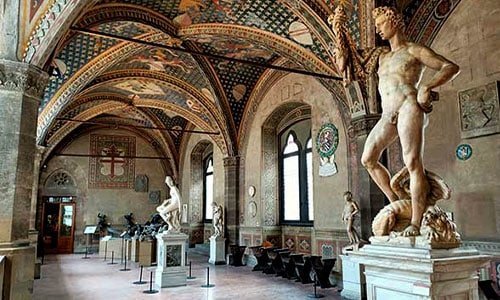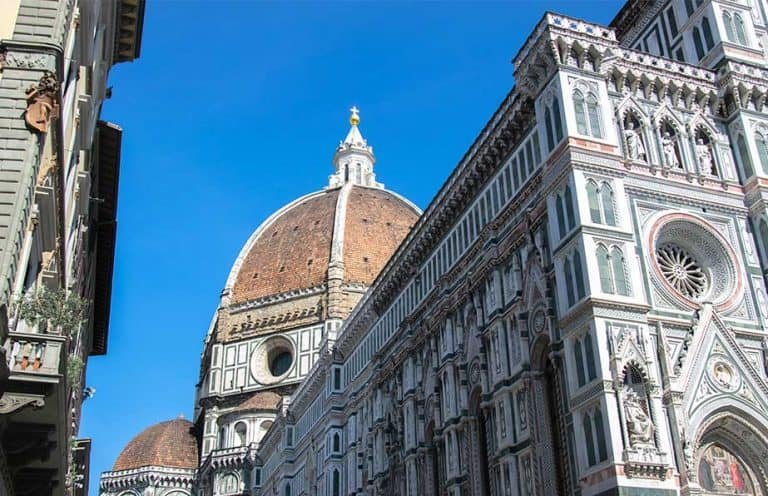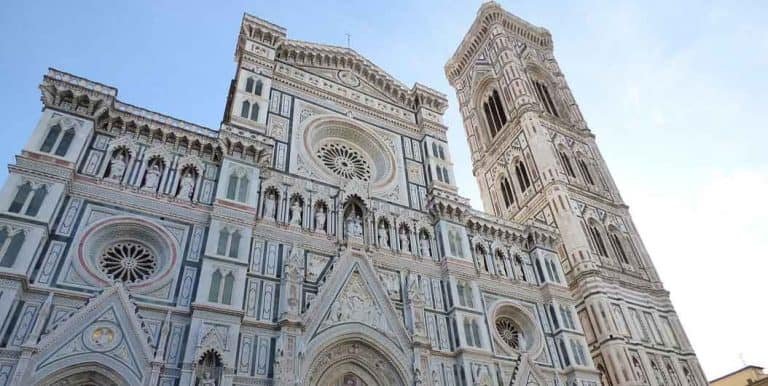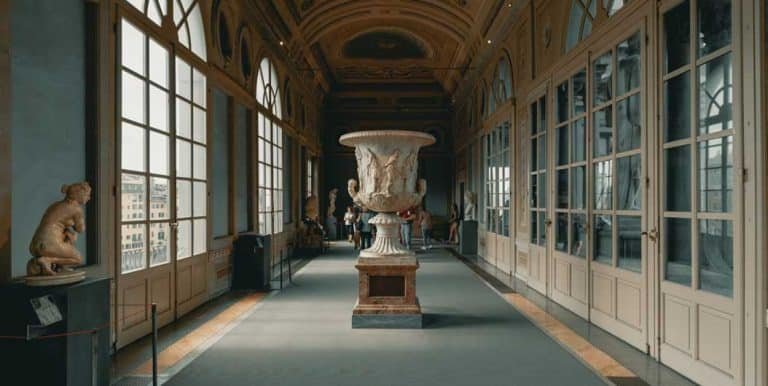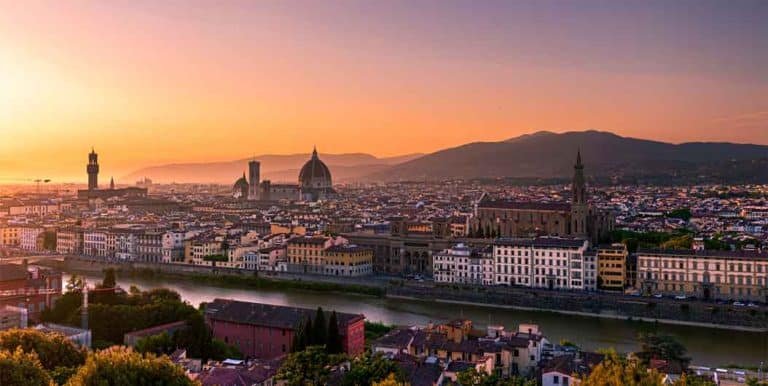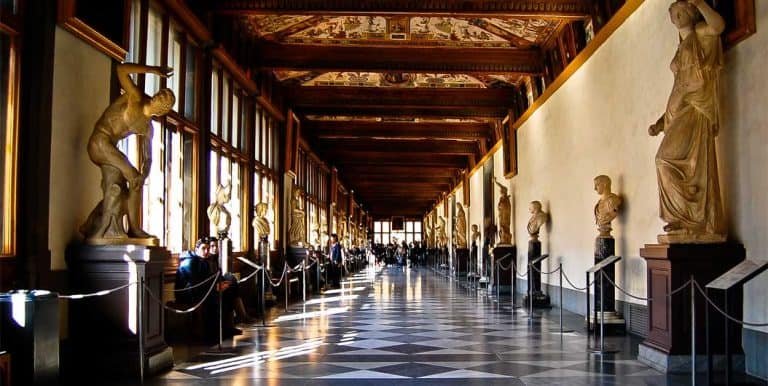Første gang i Firenze? Praktiske reisetips, feil du bør unngå og hvor du bør spise
Nøyaktig hva du bør gjøre i Firenze (for førstegangsreisende)
La oss starte med den viktigste sannheten: Firenze er ikke en dagstur. Ikke hvis du virkelig vil oppleve den. Joda, du kan rase gjennom høydepunktene på tjuefire timer, men du vil dra derfra med et kamera fullt av bilder og et fortsatt tomt hjerte. Selv et par dager føles som nok her.
Dette er den komplette guiden jeg skulle ønske noen hadde gitt meg før mitt første besøk – ærlig, seriøs, praktisk og forankret i de små tingene som betyr noe.

Når du bør besøke Firenze (og når du ikke bør)
Firenze fra Mai til oktober er pakket. Juni og juli er overfylte, spesielt i løpet av de to siste ukene av juli, som er blant de de travleste tidene på året. august er litt roligere ettersom lokalbefolkningen forlater byen, men det er farlig varmt. Hvis det ikke høres fristende ut å svette gjennom klærne innen klokken 9, bør du sikte på vår eller tidlig høst i stedet.
De beste tidspunktene å besøke? Sent i april, tidlig i mai eller oktober – når folkemengdene roer seg ned og været fortsatt er behagelig. Dette er månedene hvor du faktisk kan høre fottrinnene dine gi gjenlyd i stille klostre.
Unngå mandager — de fleste museer (som Uffizi og Accademia) er stengt. Og hopp over den første søndagen i månedenMuseene er gratis, men køene er vanvittige, og det er ingen forbi-køen-adgang.
Ett navn, to språk: Bestill tog til Firenze
Hvis du kjøper togbilletter på nett og skriver «Firenze», vil ingenting dukke opp. Det er fordi italienske tognettsteder og bestillingssystemer bruker byens opprinnelige navn: Firenze.
Så når du søker etter billetter – enten det er via Trenitalia, Italo eller en hvilken som helst reiseapp – skriv alltid inn Firenze som reisemålet ditt. Ikke Firenze. Det er en liten detalj, men hvis du ikke vet det, kan du bruke mye tid på å lure på hvorfor systemet «ikke kan finne» den mest berømte byen i Toscana.
Raskt tips: Firenze SMN (Santa Maria Novella) er hovedtogstasjonen i sentrum. Det er dit du ønsker å komme.
Firenze er den perfekte basen for dagsturer – med noen få unntak
Firenze er en av de enkleste byene i Italia å bruke som en base for dagsturerMed Santa Maria Novella stasjon (Firenze SMN) midt i sentrum, kan du hoppe på et tog og komme deg til byer som Pisa, Lucca, Arezzo, og til og med Bologna på under 90 minutter.
Men ikke alle destinasjoner er så enkle.
Noen ikoniske steder som San Gimignano ikke har en togstasjon. For å besøke må du ta en kombinasjon av tog og buss – eller enda bedre, leie en bil for en dag eller bestille en tur i liten gruppe.
Det samme gjelder for SienaSelv om den teknisk sett har en togstasjon, ligger den langt nedenfor sentrum på toppen av en ås. Du må ta en lokalbuss eller gå en bratt oppoverbakke – ikke ideelt for et kort besøk.
Å bære kontanter, kort og ID: Hva du trenger å vite
Ikke gå rundt i Firenze med en lommebok full av kontanter. Bare ha med deg det du trenger for dagen, og la resten være trygt på overnattingsstedet ditt. Lommetyveri kan forekomme – spesielt på overfylte steder som Ponte Vecchio eller i nærheten av Duomoen.
Hvis du er en reisende fra ikke-EU, du er pålagt å bære din originalt pass med deg – en fotokopi er ikke juridisk gyldig for ID-kontroller av italiensk politi. Oppbevar den sikkert og atskilt fra kontantene dine.
Legg igjen ekstra kort, unødvendige dokumenter og alt verdifullt du ikke trenger i løpet av dagen tilbake på hotellet ditt eller leilighet. Firenze er trygt, men det er ingen grunn til å bære livet ditt rundt med deg.
Start med en gratis spasertur: Den smarteste måten å utforske Firenze på

Hvis du nettopp har ankommet og vil orientere deg – eller bare vil forstå hva du ser på – bli med på en gratis spasertur på din første dag. Det er en av de beste måtene å utforske Firenze på uten å kaste bort tid eller penger.
Disse turene ledes av lidenskapelige lokalbefolkningen eller ekspertguider som vil ta deg med gjennom byens rike historie, fra Dantes nabolag til Medici-familiens politiske intriger. Og de vil også peke på de små tingene – skjulte plaketter, glemte smug og praktiske tips du ikke får fra et kart.
Slik fungerer det: Du betaler ikke på forhånd. Du gir tips om det du synes det var verdt til slutt (vanligvis er €10–€15 per person rimelig).
De fleste turene starter fra Piazza Santa Maria Novella eller Piazza della Repubblica og kjør på engelsk. Sørg for å bestill plassen din på nett på forhånd, spesielt i høysesongen – gruppene fylles raskt opp.
Hvis du liker historie, historiefortelling og å gå i et behagelig tempo mens du lærer om hva som er rundt deg, er en gratis omvisning det smarteste første steget du kan ta i Firenze.
Hvorfor du bør bestille alt på forhånd
Her er utdraget:
Firenze belønner ikke spontanitet. Bestill museumsbilletter, kuppelbestigninger og til og med middager på forhånd – spesielt i høysesongen. Ikke forvent å vandre inn i Accademia og se David på et innfall, eller få et bord på Trattoria dall'Oste uten en forhåndsbestillingDu vil ende opp med å stå i lange køer eller bli avvist. Det er best å lage en reservasjon på forhånd for alt viktig – populære restauranter, turer i små grupper, guidede turer og ikoniske landemerker som Duomoen. Ikke risiker å gå glipp av noe.
Hvorfor du må se Accademia-galleriet

Du bryr deg kanskje ikke så mye om kunst – det er greit. Men likevel, gå til Accademia-gallerietDu drar av én grunn: Michelangelos David.
Du tenker kanskje at det er overhypet. Det er det ikke. Du går inn og forventer bare enda en marmorstatue, men så ser du ham. Ruvende, stille og umulig perfekt. Det er en stillhet som senker seg over rommet, og du forstår – virkelig forstår – hvordan genialitet ser ut i marmor. Ikke kombiner dette besøket med Uffizi. Du vil forhaste deg med begge deler og ødelegge opplevelsen.
Skal du besøke Accademia-galleriet? Ikke gjør disse feilene
Hvis du har bestilt barnebilletter, må du ta med legitimasjon eller aldersbevis. Uten dette kan du bli tvunget til å betale voksenpris.
Ekstra tips: Besøk stedet tidlig om morgenen eller senere på ettermiddagen for å unngå de verste folkemengdene – og ta deg noen øyeblikk til å beundre mer enn bare David. Det uferdige Fanger av Michelangelo i samme sal er uforglemmelige.
Slik besøker du Uffizi-galleriet på riktig måte

De Uffizi-galleriet er mer enn bare et annet museum. Det inneholder Botticellis glødende Venus, Leonardo Da Vincis delikate madonnaer, Caravaggios voldsomme skygger og Michelangelos rå, spirituelle spenning. Dette er ikke malerier du bare passerer forbi. De krever tiden din.
Hvis du bestiller en omvisning som inkluderer Vasari-korridoren, bør du vite dette: tiden din inne i Uffizi-galleriet vil være begrenset og stressende. Hvis du elsker kunst – eller bare vil sette pris på den – bør du gjøre det på separate dager. Når du er ferdig, kan du gå til takkafeen over Loggia dei Lanzi. Bestill noe lite og bare nyt utsikten over Palazzo Vecchio.
De beste tidene å besøke Uffizi-galleriet (slik at du ikke sitter fast i en turistmassiv)
Piazza della Signoria: Hva du bør se (og hva de fleste besøkende går glipp av)

De fleste behandler Piazza della Signoria som et bakteppe. De knipser et bilde og går videre. Men denne plassen var en gang selve hjertet av florentinsk makt – friluftsscenen for revolusjoner, henrettelser og offentlige feiringer.
Start med å gå inn i gårdsplassen til Palazzo Vecchio – det er gratis. De malte takene og skulpturene vil umiddelbart transportere deg tilbake til renessansens storhet.
Ikke gå glipp av den subtile, men kraftige markøren nær Neptun-fontenenInnebygd i belegningssteinene er en liten, rund marmorplakett — dette markerer stedet der den radikale munken Girolamo Savonarola ble hengt og brent i 1498. Han hadde en gang styrt Firenze med ild-og-svovel-prekener, der han fordømte kunst og luksus i moralens navn. Hans død på akkurat dette stedet avsluttet et dramatisk kapittel i Firenzes historie. Det er en detalj mange overser, men når du først ser den, blir den husket.
Arnolfo-tårnet: Verdt klatringen (selv om beina dine er uenige)
Du ser det fra nesten hvor som helst i Firenze – Arnolfo-tårnet, som ruver over Palazzo Vecchio. De fleste beundrer det nedenfra. Det er en feil.
Klatring av Arnolfo-tårnet er ikke lett. Trappen er bratt, smal, og den siste biten er mer en stige enn en trapp. Men når du først er oppe der? Da glemmer du de brennende leggene. Utsikten er ren magi – et komplett panorama over Firenze, med Duomoen så nær at du føler at du kan rekke ut hånden og berøre den.
Og her er hemmeligheten: den Arnolfo-tårnet trekker ikke de samme folkemengdene som Brunelleschis kuppel eller Giottos klokketårn. Ingen kamp om plass. Ingen turistmas. Bare deg og den spektakulære utsikten over Firenze som sprer seg nedenfor som et renessansemaleri.
Så ja – den Arnolfo-tårnet er absolutt verdt klatringen. Dra tidlig eller rett før stengetid, ta deg god tid og ta med kameraet ditt.
Loggia dei Lanzi: Et gratis friluftsgalleri du ikke bør ignorere

Det ligger rett ved siden av Palazzo Vecchio, på hjørnet av Piazza della Signoria. De fleste tar et bilde og går videre. Ikke gjør det.
De Loggia dei Lanzi er helt gratis og vidåpen mot gaten – men den inneholder noen av de viktigste, utrolige skulpturene i Firenze. Du vil se Benvenuto Cellinis bronsestatue av Perseus, som holdt opp Medusas avhuggede hode. Det var ikke bare kunst – det var et politisk budskap, ment å advare og imponere. Så er det Giambolognas voldtekt av Sabinerkvinnene, skåret ut av en enkelt marmorblokk. Den er full av bevegelse, drama og umulig balanse – den typen skulptur som belønner deg jo lenger du stirrer.
Det er ingen sikkerhetsvakt, ingen glass, ingen billett – og det er nettopp det fine med det. Firenze lar noen av sine største mesterverk ligge ute i det fri, og venter på at noen skal stoppe og faktisk se.
Slik hopper du over køen til katedralen (lovlig)
Firenze-katedralenDet er gratis adgang til (Santa Maria del Fiore), men køen utenfor kan være knusende. Her er et triks: kjøp en billett på forhånd som inkluderer et besøk til Santa Reparata-krypten nedenfor. Etter besøket går du rett inn i katedralen og hopper over hovedkøen helt.

På vei inn, ikke glem å se ned nær venstre side av fasaden. Du vil se en sirkulær marmormarkør – det er der lykten fra toppen av kuppelen styrtet i bakken etter et lynnedslag i 1601. Århundrer senere står merket fortsatt der. Firenze husker alt.
Ikke ignorer kleskoden. Ingen bare skuldre, ingen korte skjørt, ingen hatter. De vil avvise deg i døren uten å nøle.
Kuppel eller klokketårn? Velg klokt
Å klatre opp Brunelleschis kuppel er en trang, bratt og ærefryktinngytende opplevelse. Du passerer mellom kuppelens indre og ytre skall, går rett under Vasaris massive freske av Den siste dom, og kommer helt opp på toppen, med byen lagt ut som et maleri.
Giottos klokketårn er litt enklere og gir deg den ene utsikten du ikke får fra kuppelen – selve kuppelen. Hvis du bare skal besøke én av dem, velg klokketårnet. Men hvis du kan takle begge, er de helt forskjellige og like uforglemmelige.
Brunelleschis kuppel: Viktige tips for en jevn klatring
Ponte Vecchio er best etter mørkets frembrudd

Ved middagstid, den Ponte Vecchio er en fullpakket elv av selfiestenger og overpriset gull. Men kom ved solnedgang eller etter mørkets frembrudd, og det blir noe helt annet – stille, gyllent, tidløst. Butikkskoddene er lukket, elven reflekterer lysene, og Firenze føles gammeldags igjen. Hold øye med vesken din her – lommetyver vet at det er et hovedmål. Og hopp over smykkene med mindre du er villig til å betale for mye for noe generisk.
Baderom, vesker og sko: Vær smart
Bruk toalettet før du går inn i en klatretur, et museum eller en kirke. Når du er i kø eller halvveis opp en smal trapp, er du forpliktet – og fasiliteter er ikke tilgjengelige inne i noen monumenter. Dette gjelder spesielt for Brunelleschis kuppel, hvor det finnes absolutt ingen toaletter, og du kan ikke gå inn med en ryggsekk av noen størrelseAll bagasje må sjekkes inn på forhånd, og prosessen kan forsinke deg nok til at du går glipp av den tidsbestemte innreisen hvis du ikke er tidlig ute.
På andre store museer og kirker – som Uffizi-kirken, Palazzo Vecchio, og Santa Croce – Toalettene er tilgjengelige for besøkende, men ikke alltid praktisk plassert underveis i besøket. Det er fortsatt best å dra på forhånd for å unngå å forkorte besøket eller gå glipp av viktige øyeblikk.
Ryggsekker er også ikke tillatt i de fleste museer, spesielt når det gjelder skjøre kunstverk og trange gallerier. Du må oppbevare dem i den angitte garderoben eller legge dem igjen på overnattingsstedet ditt. Selv små vesker kan være forbudt i noen utstillinger, så det er best å bare ha med seg en kompakt, håndfri dagveske hvis det er tillatt.
Fottøy er viktig. Firenzes gater er brolagt med gamle brosteiner, og museumsgulvene er ofte av polert stein. solide, sklisikre sko – ingen hæler, ingen tynne sandaler, ingen glatte såler. Gå for komfortable joggesko eller støttende tursandaler. Moteriktige sko med tynne såler kan se bra ut, men vil gjøre at føttene dine verker halvveis i dagen.
Og ta med en påfyllbar vannflaskeFirenze har mange offentlige fontener – kalt «nasoni» — som gir rent, kaldt drikkevann gratis. Det er spesielt nyttig i sommervarmen.
Firenze utforskes best med lett og forberedt reise. Smart pakking utgjør hele forskjellen.
Hvor du bør handle i Firenze – og hvor du ikke bør
Hopp over de overprisede gullbutikkene. Unngå også. San Lorenzo-markedet og Det nye markedet – en gang flott, nå for det meste imitert skinn og masseproduserte suvenirer.
For ekte lær: besøk Scuola del Cuoio inni Santa Croce.
For en meningsfull suvenir: gå til Apotek Santa Maria Novella — åpent siden 1200-tallet, og lager fortsatt håndlagde parfymer og såper.
I stedet for turistmarkedene, prøv å handle som en lokal:
Firenze har mer å tilby enn bare lærvesker. Gå utenfor allfarvei og oppdag hvor byen virkelig handler. Det er magisk når folkemengdene er borte. På dagtid er det fullt og beryktet for lommetyver.
Hopp over de overprisede gullbutikkene. Unngå også. San Lorenzo-markedet og Det nye markedet – en gang flott, nå for det meste imitert skinn og masseproduserte suvenirer.
For ekte lær: besøk Scuola del Cuoio inni Santa Croce.
For en meningsfull suvenir: gå til Apotek Santa Maria Novella — åpent siden 1200-tallet, og lager fortsatt håndlagde parfymer og såper.
Hvorfor du ikke bør hoppe over Santa Croce i Firenze
Santa Croce-kirken er et av de helligste stedene i Firenze. Ikke bare for sin skjønnhet, men for dem som hviler innenfor murene: Michelangelo, Galileo, Machiavelli, Rossini. Dette er ikke bare navn i en guidebok. De er liv som formet verden. Å stå foran Michelangelos grav er annerledes enn å se David. Her beundrer du ikke verkene hans. Du anerkjenner hans slutt.
Selve kirken er elegant, stille og fylt med lys. Gå sakte. La den bli med deg.
Hvor finner du den beste panoramautsikten i Firenze (solnedganger og panoramaer)

Firenze belønner de som klatrer. Enten det er opp bratte trapper, stille åser eller svingete hagestier, er utsikten verdt hvert skritt. Dette er stedene hvor byen åpenbarer seg fullt ut.
Start med Piazzale Michelangelo, det mest berømte panoramapunktet i Firenze. Ja, det kan bli folksomt der, men det er en grunn til at det er populært. Utsikten feier over elven Arno og fanger hele den historiske silhuetten – med Brunelleschis kuppel foran og i midten. Dra dit én time før solnedgang, når himmelen blir gyllen og byen gløder, og bli litt etter mørkets frembrudd når folkemengdene minker og lysene blinker på.
Rett ovenfor Piazzale Michelangelo er San Miniato al Monte, en stille romansk kirke som ligger enda høyere. Færre turister klatrer opp hit, noe som betyr at du ofte har utsikten – og den fredelige stillheten – nesten for deg selv. Det er et av de mest magiske stedene i Firenze, spesielt hvis du besøker stedet mens munkene synger kveldsvespers.
For noe litt grønnere, ta en tur inn i Giardino Bardini, en terrassehage som kombinerer blomstrende pergolaer, skjulte fontener og postkortlignende utsikter. Det er en liten inngangsbillett, men det er sjelden folksomt, og utsikten over kuppelen innrammet av blåregn eller eføykledde vegger er rett ut av et eventyr.
Og hvis du har lyst til å reise litt lenger, ta bussen til Fiesole, en liten åsby like utenfor Firenze. Fra det rolige utsiktspunktet kan du se tilbake over hele byen og dalen utenfor. Det er fredelig, panoramautsikt og et kjærkomment pust av frisk luft etter maset i det historiske sentrum.
Slik kommer du deg til Piazzale Michelangelo (gå eller sykle)
Til fots: Det er tre naturskjønne måter å gå opp på:
Bare en kort spasertur unna finner du San Miniato al Monte (enda bedre utsikt og en fredelig kirke) og Giardino Bardini (en hageflukt med postkort-perfekte scener).
Med buss: Busser 12 og 13 gå fra Santa Maria Novella stasjon til Piazzale på omtrent 20 minutter. Trykk på et kontaktløst kort (ett kort per rytter) eller bruk en billett til 1,70 euro som er kjøpt på forhånd. Sitt på høyre side for den beste utsikten mens du klatrer.
Transportguide for Firenze: Gåturer, busser, trikker og ZTL-soner
Firenze er en kompakt byDet historiske sentrum er flatt og skapt for å utforskes til fots. De fleste store landemerkene ligger innen 15 til 20 minutters gange fra hverandre. Du får mest mulig ut av Firenze ved å vandre – la deg oppdage stille hjørner, skjulte kirker og vakre øyeblikk du ikke finner på et kart.
Hvis føttene dine trenger en pause, eller du bor utenfor sentrum, er offentlig transport pålitelig og enkel å bruke. Busser og trikker går ofte. Kjøp buss- eller trikkbilletter på forhånd fra enhver tobakksbutikk (se etter det blå T-skiltet), salgsautomater eller via mobilapper. Når du har gått ombord, valider billetten din ved hjelp av den gule eller røde maskinen om bord.
Du kan også bruke en kontaktløst bankkort eller smarttelefon å tappe inn på bussen. Bare husk: ett kort = én rytterDu kan ikke trykke to ganger med samme kort for flere personer – hver person trenger sin egen betalingsmåte eller billett.
Hvis du ankommer med bil, ikke kjør inn i Firenze sentrumZTL (Zona a Traffico Limitato) overvåkes strengt av kameraer, og bøter utstedes automatisk for uautorisert tilgang. Disse bøtene sendes internasjonalt og er svært reelle.
Parker heller bilen din kl. Villa Costanza, en egen parkeringsplass like ved motorveien A1. Det er enkelt, trygt og rimelig. Derfra kan du hoppe på T1 trikkelinje, som tar deg rett inn i hjertet av Firenze på omtrent 25 minutter – ingen trafikk, ingen stress, ingen risiko for bøter. ZTL-kameraer vil gi deg bøter. Hvis du ankommer med bil, parker på Villa Costanza og ta trikk inn i byen.
Hvorfor du bør bli med på et matlagingskurs i Firenze (og hva du lærer)
Firenze handler ikke bare om å beundre fortiden – det handler om smaker på det ogsåEn av de beste måtene å gjøre det på? Bli med på et matlagingskurs.
Bruk noen timer på å lære å lage fersk pasta, kjevle ut ekte toskansk pici eller lage tiramisù som smelter i munnen. Du får praktisk erfaring med lokale ingredienser, deler et måltid med nye venner og tilegner deg ferdigheter du kan ta med deg hjem.
Noen kurs inkluderer et besøk på matmarkedet om morgenen, hvor du lærer å finne de beste sesongens råvarer og tradisjonelle ingredienser som pecorino, villsvin eller ferskbakt pane toscano. Andre finner sted på landlige kjøkken like utenfor Firenze.
Det er mer enn en klasse. Det er en måte å smak Toscana – med mel på hendene og vin i glasset.
Hvor du kan spise i Firenze som en lokal (ikke en turistfelle)

Hopp over den TikTok-berømte sandwichbutikken. Hopp over ethvert sted med matbilder, flerspråklige menyer eller noen som ber deg om å komme inn. Firenze er ikke en by med gimmicks – det er en by med deilig mat. Spis der lokalbefolkningen gjør det, og du vil forstå forskjellen etter første bit.
Start med bistecca alla Fiorentina, den berømte T-bone-biffen som er svidd på utsiden og blodrød på innsiden. Hvis du liker biffen din gjennomstekt, ikke bestill den – denne retten serveres sjelden og med stolthet. Prøv den hos Trattoria dall'Oste, en favoritt blant både lokalbefolkningen og matelskere, eller på La Carne ei Salumi inne i Mercato Centrale for en mer avslappet markedsstemning.
For noe raskere, ta en schiacciata sandwich — det sprø, salte toskanske flatbrødet fylt med spekemat, ost eller grønnsaker. Girone dei Ghiotti er en liten perle med store smaker. Jeg Fratellini, en liten disk med direkte tilgang, serverer smørbrød med et glass vin på gaten. Og Schiacciata de' Neri er også utmerket, selv om det ofte er en lang turistkø – dra tidlig hvis du vil unngå ventetiden.
Føler du deg modig? Prøv lampredotto — den fjerde magen til en ku, langtidskokt og servert i et brød med salsa verde. Det er en ekte florentinsk gatemat-klassiker. Lokalbefolkningen sverger til den. Trippaio del Porcellino og Bambi på Mercato Centrale, hvor smørbrødet er varmt, klissete og helt nydelig.
Når det er tid for dessert, hopp over de ruvende neonfjellene av kunstig gelato og finn den ekte varen. Sant nok. kunstig gelato oppbevares i stålbokser med lokk, og fargene er myke og naturlige. Pistasjnøtter skal være beige. Gå til Gelateria dei Neri, La Carraia, eller den elskede Abbor Nei!, som har servert gelato siden 1939.
Hvis du har lyst på pasta, ta turen innom Osteria del Cinghiale Bianco og orden pappardelle al cinghiale – brede nudler dynket i en dyp, viltrik villsvin-ragù som smaker som det toskanske landskapet i en bolle.
For komfortmat, prøv ribollita, en tykk brød- og grønnsakssuppe som blir bedre hver gang den varmes opp igjen. Eller pappa al pomodoro, en varm blanding av tomat, brød, hvitløk og olivenolje som føles som en klem. Flotte steder å smake på disse inkluderer Trattoria da Sergio Gozzi, Vini e Vecchi Sapori, Jeg er Raddi, og Trattoria I' Due G — enkle trattoriaer der lokalbefolkningen fortsatt spiser lunsj hver dag.
For å gå helt tradisjonelt, bestill fagioli all'uccelletto — kremete cannellinibønner kokt med tomat og salvie. Prøv dem på Trattoria Mario eller Trattoria Sostanza, to institusjoner hvor porsjonene er sjenerøse og oppskriftene ikke har endret seg på flere tiår.
Og til slutt, avslutt måltidet med Cantucci og Vin SantoMandelbiscottiene er tørre og sprø, og er ment å dyppes i et lite glass søt toskansk dessertvin. De fleste familiedrevne trattoriaer bringer dette til bordet ditt som en stille gest, en avslutning på en velspilt sang.
Slik fungerer det:
Du ser deg rundt blant de forskjellige matbodene, som hver spesialiserer seg på forskjellige retter – fra pasta og biff til pizza, lampredotto og desserter. Når du er klar, stiller du deg i kø ved boden du ønsker, bestiller, betaler (kort aksepteres overalt) og venter mens de tilbereder retten din fersk og foran deg.
Det er ingen sentral kasserer – du betaler ved hver enkelt stand. Du kan fritt ta en plass ved et av de delte bordene rundt hallen, eller gå opp til terrassen, som tilbyr utsikt over markedet nedenfor. Drikke er de eneste rettene som serveres ved bordet ditt – bare sett deg ned, så kommer en servitør bort for å ta drikkebestillingen din.
Stedet er uformelt og innbydende, men det kan bli overfylt i rushtiden. For færre køer og en mer avslappet opplevelse, bør du vurdere å komme litt senere på ettermiddagen. Hverdager er vanligvis bedre enn helger.
Det du må prøve på Mercato Centrale
Hva du bør hoppe over på Mercato Centrale
Ikke alt på Mercato Centrale er verdt appetitten. Mens noen boder serverer enestående mat av høy kvalitet, føles andre mer turistfokuserte, overprisede eller rett og slett ikke autentiske.
TommelfingerregelHopp over alt som ikke ser florentinsk ut eller virker ferdigkokt – du kan vanligvis se det. De beste rettene er de som er laget ferske, med stolthet og lokale tradisjoner bak seg.
Å lese anmeldelser før du velger hvor du skal spise kan virkelig utgjøre forskjellen mellom et minneverdig toskansk måltid og noe du umiddelbart vil glemme (eller angre på).
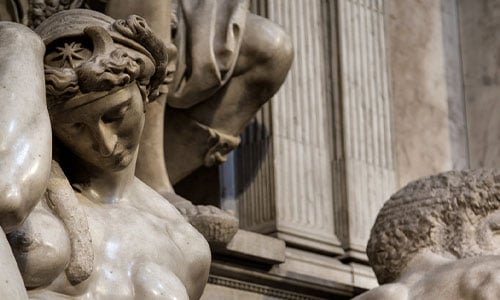
Medici-kapellene
Totalt 50 medlemmer av Medici-familien er gravlagt i Medici-kapellene, som ligger i basilikaen San Lorenzo.

